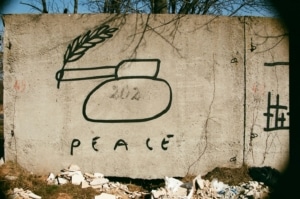The Uncomfortable Truth of Racism: A Reflection Inspired by Mary Elizabeth Moore
The Uncomfortable Truth of Racism: A Reflection Inspired by Mary Elizabeth Moore
In a world that often feels divided, the stories we share can serve as bridges to understanding and healing. Today, I want to introduce you to a remarkable woman Lynette and I met at the Academy for Spiritual Formation in Nebraska: Mary Elizabeth Moore. A master educator, prolific writer, and speaker, Mary Elizabeths’s work in religious education, process theology, and practical theology is deeply rooted in a commitment to repair the world. To explore the full depth of her contributions, you can visit her [bio here](https://www.biola.edu/talbot/ce20/database/mary-elizabeth-moore).
The real reason for this blog, however, is to delve into a powerful poem that Mary Elizabeth wrote, titled “I Confess.” This poem is not just a reflection of her personal experiences; it is a mirror held up to society, challenging us to confront the uncomfortable truths about racism and privilege.
I Confess
Growing up with Mary shaped me
As a person far more sensitive
Then I would have otherwise been,
A child who could love and giggle,
And dash quietly to bed
When my parents came home early.
My world taught me
that Mary’s Blackness
was less than my whiteness
though I always knew
she was better than me.
The racist structures
We enacted were strengthened
By my family’s participation
I did not condemn
Those structures with anything more
Then a few probing questions
For a few minutes at a time,
Even as I prayed every night,
“God bless Mama and Daddy
And Mary and me.”
White supremacy
Shaped me in my very own home,
Yet I whole-heartedly loved Mary
And was powerfully shaped by her love
And by the deep Black culture
She taught me to value
As if it were my own.
My white-privilege perspectives
Emerged in the same childhood
That taught me to critique them,
slowly, oh so slowly
In my youth, but bursting
Ever more boldly as I grew
though I have not
And never will
Be free of its taint.
This poem resonates deeply with me, as it evokes memories of my own upbringing in Detroit, where I witnessed firsthand the destructive power of hate and judgment. The raw honesty in Mary Elizabeth’s words forces us to confront the uncomfortable realities of our pasts and the systems that have shaped our identities.
Mary Elizabeth’s poem encapsulates the struggle of recognizing privilege while grappling with the love and relationships that exist within a racially charged environment. It highlights the paradox of loving someone from a marginalized community while simultaneously benefiting from a system that devalues their existence. This duality is a painful truth that many of us must face.
As I reflect on my own experiences, I am reminded of the countless times I have seen the impact of racism on families, individuals, and communities. The scars left by systemic oppression run deep, and they are often invisible to those who do not experience them. Mary Elizabeth’s poem serves as a reminder that acknowledging our privilege is not enough; we must actively work to dismantle the structures that perpetuate inequality.
The Journey Toward Understanding
Mary Elizabeth’s journey of self-awareness and growth is a testament to the power of reflection and education. It is a reminder that the path toward understanding is often slow and filled with discomfort. As she writes, “Slowly, oh so slowly / In my youth, but bursting / Ever more boldly as I grew.” This gradual awakening is something many of us can relate to, as we navigate our own journeys of understanding and kinship.
The discomfort that arises from confronting our biases and the reality of racism is a necessary part of this journey. It is through this discomfort that we can begin to challenge our preconceived notions and work toward a more equitable society. Mary Elizabeth’s poem encourages us to engage in difficult conversations, to ask probing questions, and to seek out the stories of those who have been marginalized.
As we reflect on the themes presented in Mary Elizabeth’s poem, we must ask ourselves: What will it take to look at one another without the taint of prejudice? How can we actively participate in the repair of our world? The answers to these questions lie in our willingness to listen, learn, and engage with the experiences of others.
We must commit to educating ourselves about the history and impact of racism, both in our communities and beyond. This includes amplifying the voices of those who have been silenced and advocating for policies that promote equity and justice. It requires us to confront our own biases and to hold ourselves accountable for our actions.
Mary Elizabeth Moore’s work and her poignant poem serve as a powerful reminder of the importance of empathy, understanding, and action. To explore more of her insights and contributions, consider reading her book, which you can find here..
So Much to Love, So Much to Lose Paperback – September 18, 2023
by Mary Elizabeth Moore (Author)
If I were to conclude here, you might think that because Mary Elizabeth’s poem describes a meaningful relationship with a person of color that this is my focus for this blog, it is not! But in a world that often feels divided, we have the power to bridge the gaps through understanding and compassion. Mary Elizabeth’s poem, “I Confess,” challenges us to confront our own biases and to recognize the impact of racism towards all people groups in our lives. It is a call to action, urging us to engage in the difficult work of dismantling systemic oppression and fostering a more inclusive society. And folks, you do not have to agree with other people groups to get along with them. Right?
Can we move forward, carrying the lessons from Mary Elizabeth’s experiences and the truths revealed in her poem inside of us? Because together, we can create a world where love and understanding triumph over hate and division. By committing to being agents of change, and working tirelessly to repair the wounds of our past and build a brighter future for all ……
we can began to heal.

